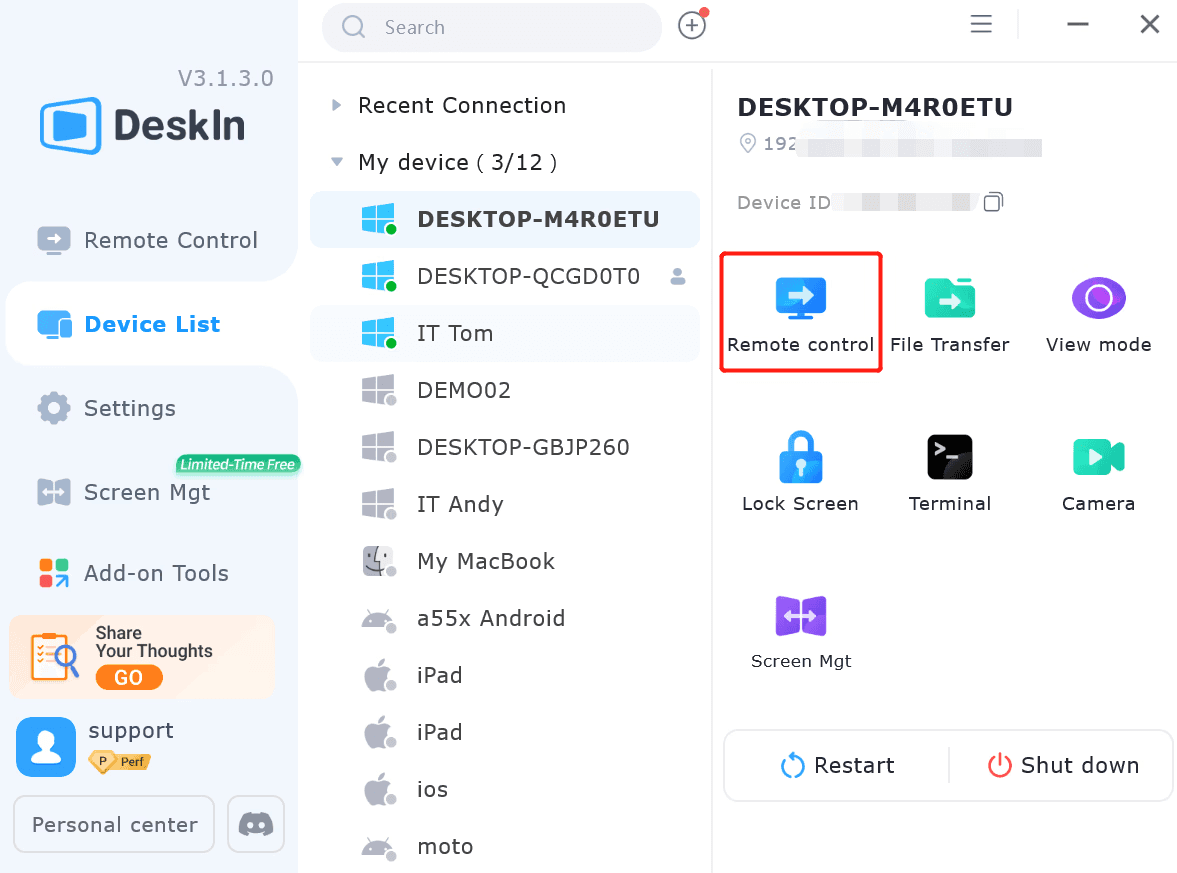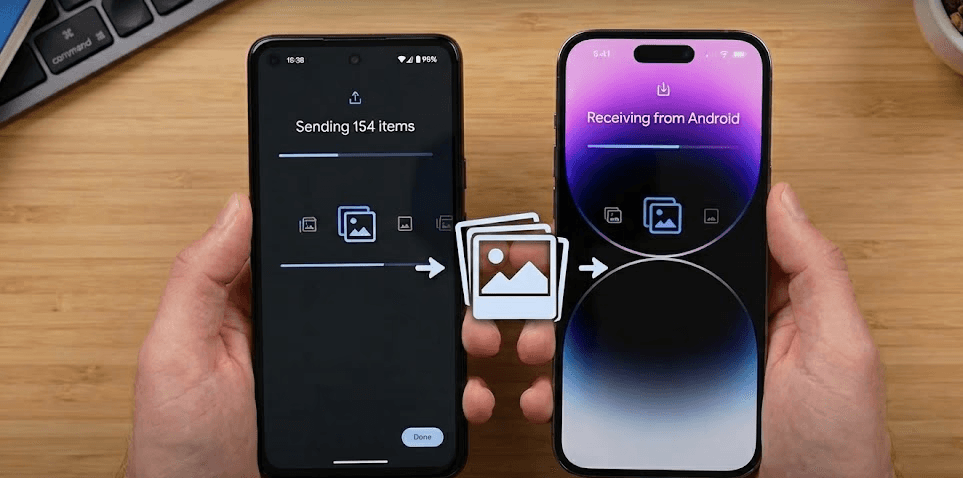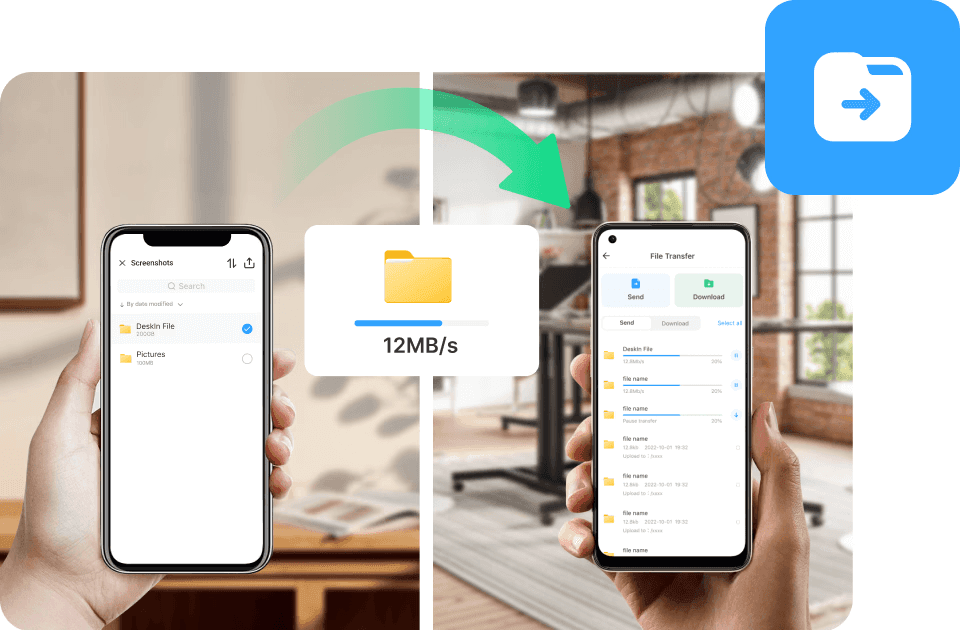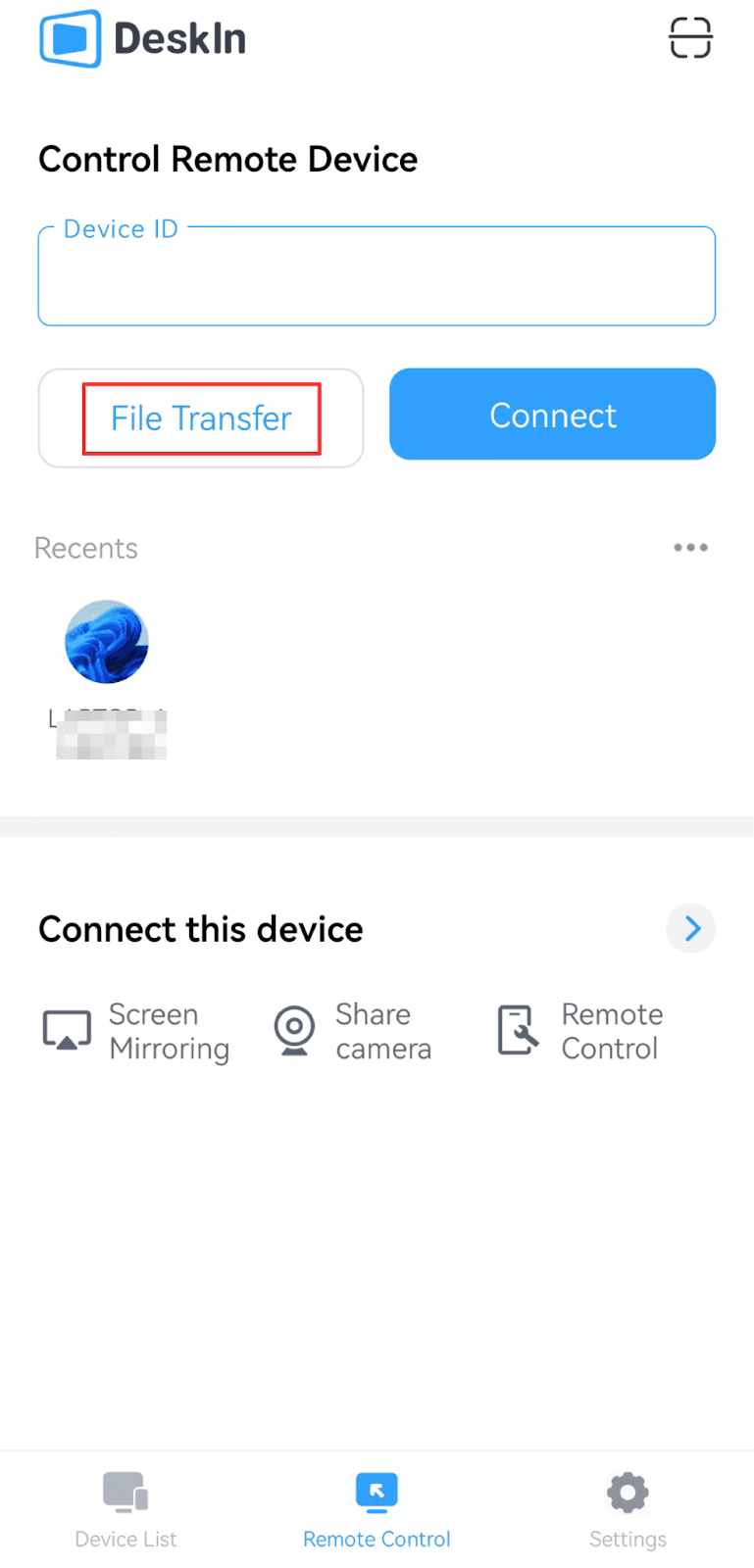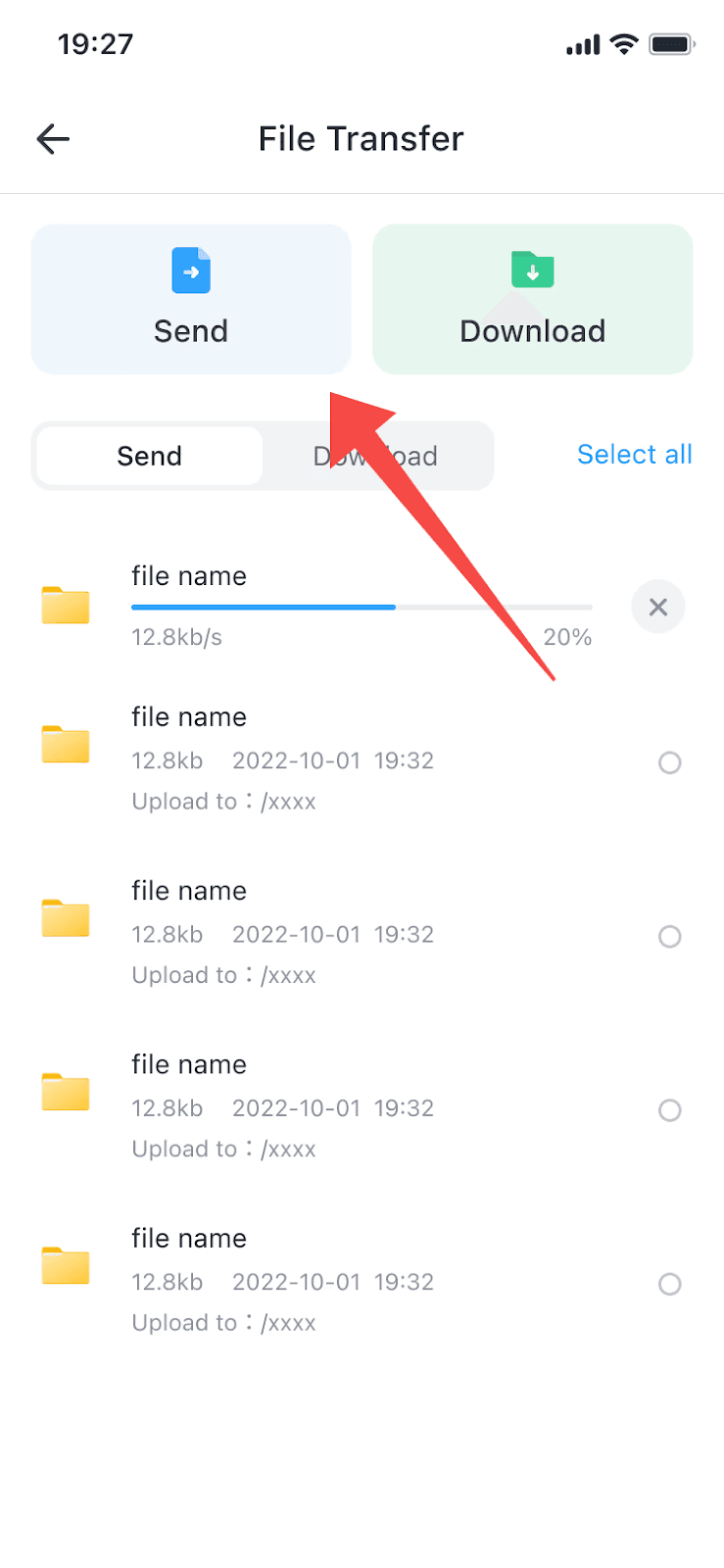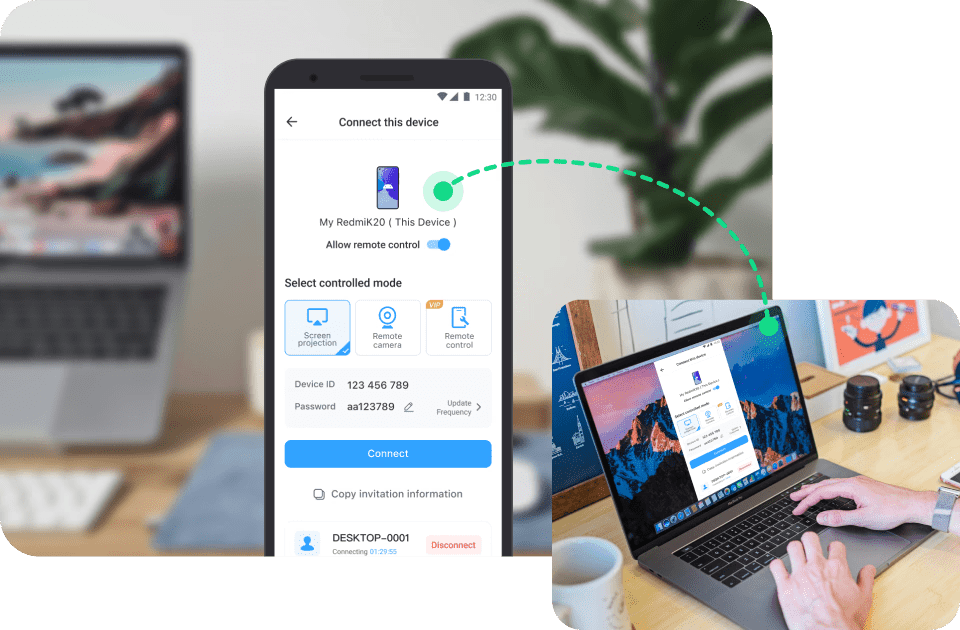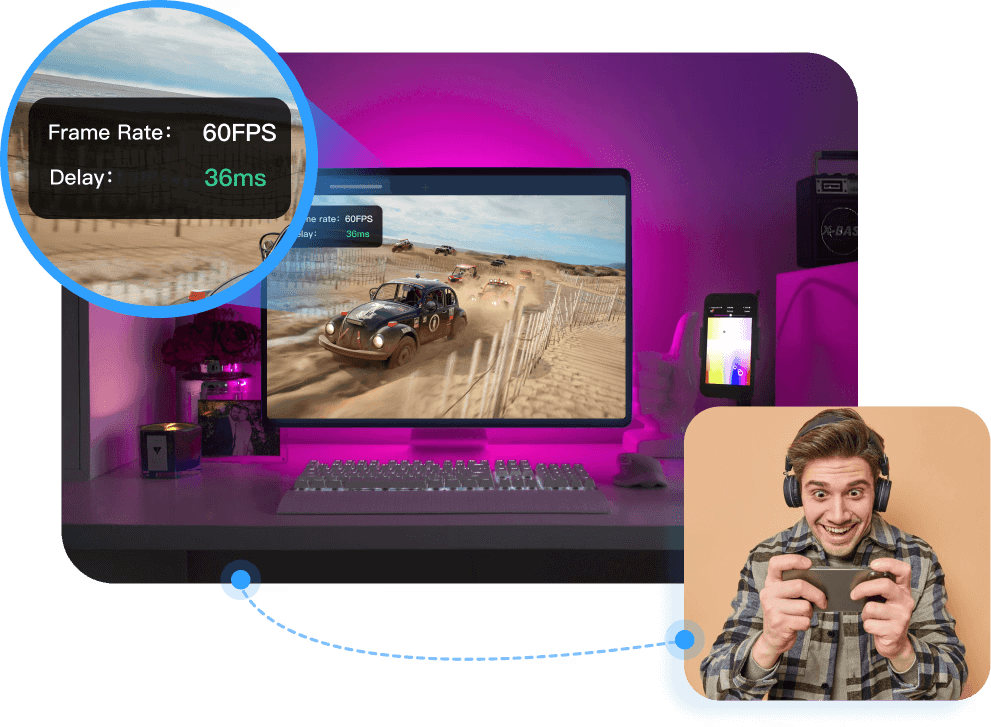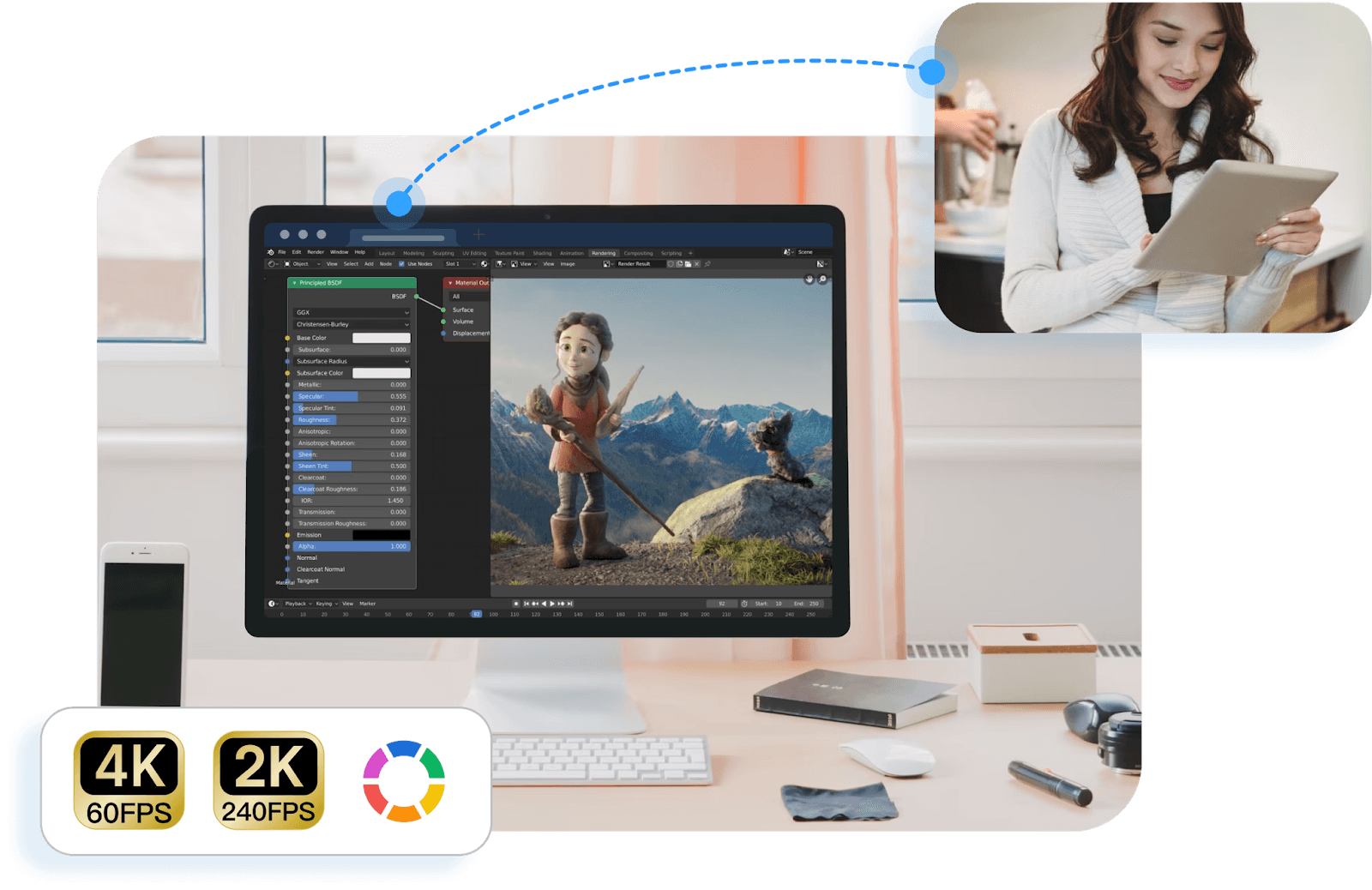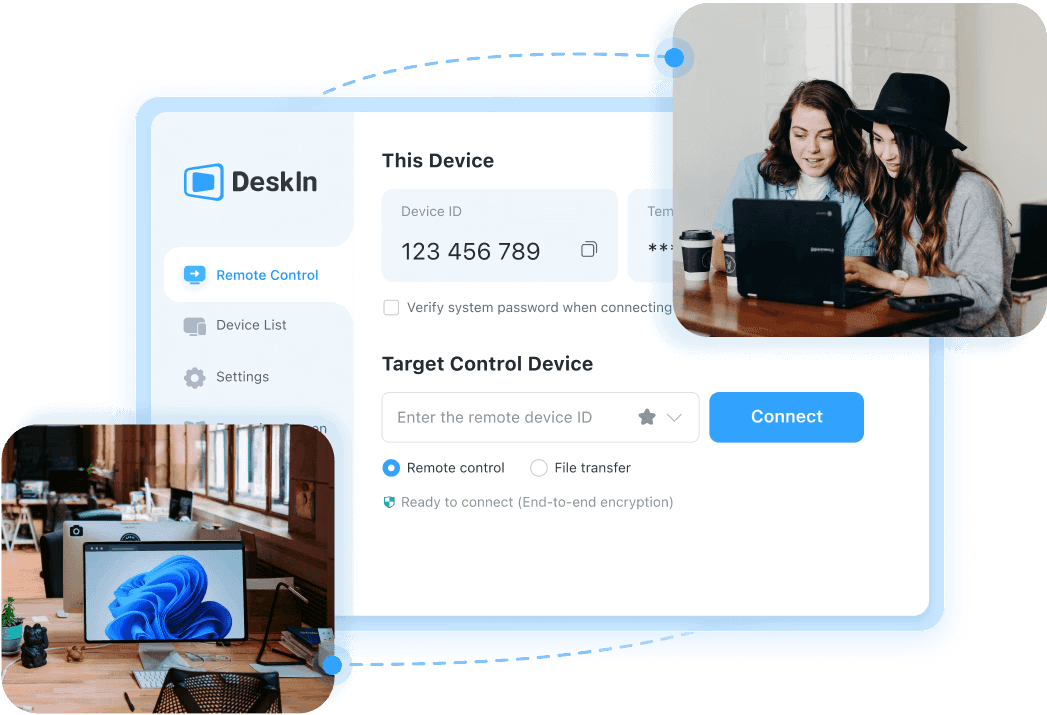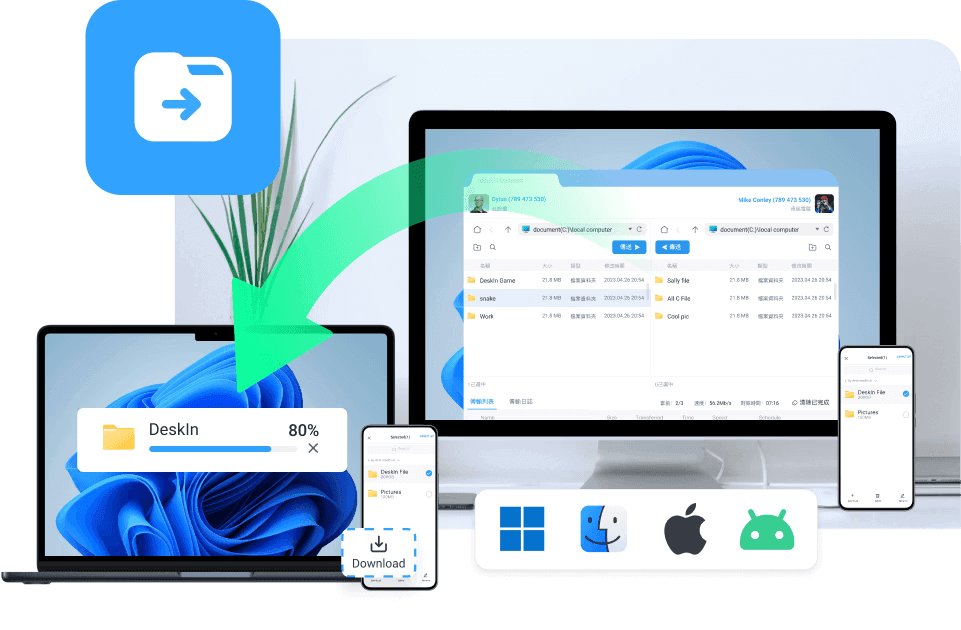Làm thế nào để đảm bảo truy cập Desktop từ xa an toàn trên máy tính Windows 10/11
Khi làm việc từ xa trở thành một phần thường trực của doanh nghiệp hiện đại, việc đảm bảo an ninh cho desktop từ xa không còn là sự lựa chọn mà là điều cần thiết. Nhân viên ngày càng cần truy cập vào máy tính văn phòng, máy chủ hoặc phần mềm chuyên dụng từ nhà hoặc khi di chuyển. Một cấu hình đơn giản của Giao thức Desktop từ xa (RDP) có thể dường như nhanh chóng, nhưng sự tiện lợi này cũng mang đến những mối lo ngại về an ninh mới, đặc biệt khi dữ liệu doanh nghiệp nhạy cảm di chuyển qua các mạng công cộng.
Vậy, liệu truy cập desktop từ xa có an toàn theo mặc định không? Câu trả lời phụ thuộc vào cách bạn cấu hình và bảo vệ nó. Trong hướng dẫn này, chúng tôi sẽ bàn về lý do tại sao truy cập desktop từ xa an toàn lại quan trọng, những rủi ro cần cảnh giác, và cách thiết lập một kết nối an toàn, đặc biệt trên Windows 10 và 11.
👀 Bạn có thể cần:
Tại sao truy cập Desktop từ xa an toàn lại quan trọng?
Khi làm việc từ xa và làm việc kết hợp trở thành quy chuẩn, truy cập desktop từ xa hiện là điều cần thiết cho nhiều doanh nghiệp. Nhưng với việc sử dụng ngày càng tăng thì cũng đi kèm với những rủi ro an ninh gia tăng. Đảm bảo truy cập desktop từ xa an toàn không còn là sự lựa chọn. Nó là một phần cốt lõi của chiến lược an ninh desktop từ xa hiện đại.
Theo Gartner, gần 70% tổ chức có kế hoạch duy trì lực lượng lao động kết hợp. Sự thay đổi này tăng cường tính linh hoạt nhưng cũng làm mở rộng bề mặt tấn công. Các công cụ như RDP, khi được cấu hình sai, thường là mục tiêu. Kaspersky báo cáo một sự gia tăng 60% trong các cuộc tấn công RDP bằng phương pháp brute-force trong năm 2023 so với mức trước đại dịch.
Các con số này cho thấy một vấn đề rõ ràng: truy cập từ xa mà không có các biện pháp bảo vệ hợp lý có thể dẫn đến phần mềm độc hại tống tiền, vi phạm dữ liệu và thỏa hiệp hệ thống. Do đó, bảo mật desktop từ xa thực sự cần hơn cả tường lửa và mật khẩu; nó yêu cầu một cách tiếp cận đa lớp, từ đầu đến cuối. Đối với những người làm việc từ xa và các nhóm CNTT, việc bảo vệ quyền truy cập là rất quan trọng để bảo vệ tính liên tục của doanh nghiệp.
Những rủi ro phổ biến của truy cập từ xa không an toàn
Không phải tất cả các rủi ro truy cập từ xa đều phát sinh từ các cuộc tấn công mạng phức tạp—nhiều rủi ro xuất phát từ những sai lầm đơn giản, hàng ngày. Dưới đây là một số cạm bẫy phổ biến nhất, đặc biệt là đối với người dùng không phải IT:
Sử dụng Wi-Fi công cộng mà không có biện pháp bảo vệ: Các kết nối từ xa thực hiện trên mạng quán cà phê, sân bay, hoặc khách sạn thường không được mã hóa và trở thành mục tiêu dễ dàng cho các cuộc tấn công man-in-the-middle. Nếu không có VPN hoặc mã hóa, phiên của bạn có thể bị chặn.
Dựa vào các thiết lập mặc định: Để các cổng desktop từ xa mở, bỏ qua xác thực hai yếu tố, hoặc sử dụng mật khẩu yếu/mặc định sẽ làm gia tăng nguy cơ bị tấn công bằng phương pháp brute-force.
Chia sẻ tài khoản giữa các người dùng: Cho phép nhiều người cùng đăng nhập với cùng một thông tin xác thực sẽ làm cho việc theo dõi hoạt động trở nên bất khả thi và giảm đáng kể tính bảo mật của quyền kiểm soát truy cập.
Bỏ qua cập nhật và bản vá: Các hệ thống lạc hậu bỏ lỡ các bản sửa lỗi bảo mật quan trọng, làm cho chúng dễ bị tổn thương trước các lỗ hổng đã biết thường được sử dụng trong các cuộc tấn công vào các thiết lập desktop từ xa.
Bỏ qua giới hạn quyền truy cập người dùng: Cấp quyền truy cập đầy đủ cho mọi người dùng từ xa, ngay cả khi không cần thiết, sẽ mở cánh cửa cho việc sử dụng sai lầm không mong muốn hoặc cố ý.
Các sai lầm này có thể có vẻ nhỏ, nhưng chúng có thể có hậu quả lớn. Đó là lý do tại sao các thực hành bảo mật tốt nhất trong làm việc từ xa không phải là tùy chọn, mà là điều cần thiết.
Cách truy cập an toàn vào Desktop từ xa trên Windows 10/11
Trong khi những rủi ro của truy cập từ xa không an toàn là rõ ràng, tin tốt là: hầu hết trong số đó có thể được tránh với việc thiết lập và sử dụng đúng cách. Dù bạn là một nhân viên từ xa hay quản lý một nhóm nhỏ, thực hiện các bước đúng cách có thể giảm đáng kể bề mặt tấn công của bạn và đảm bảo truy cập desktop từ xa an toàn mỗi lần.
Dưới đây là hướng dẫn từng bước để chỉ cho bạn cách bảo mật các kết nối desktop từ xa trên Windows 10 hoặc Windows 11.
Bước 1: Thiết lập Desktop từ xa trên máy tính chủ
Bắt đầu, bạn sẽ cần bật Desktop từ xa trên máy tính mà bạn muốn truy cập.
Đi tới "Cài đặt → Hệ thống → Desktop từ xa"
Bật "Kích hoạt Desktop từ xa"
Kiểm tra tùy chọn: "Chỉ cho phép các kết nối từ máy tính chạy Desktop từ xa với Xác thực cấp mạng (được khuyến nghị)"

Bước 2: Tạo một tài khoản người dùng cục bộ dành riêng cho truy cập từ xa
Tránh sử dụng tài khoản quản trị viên của bạn cho các đăng nhập từ xa. Thay vào đó:
Tạo một tài khoản người dùng chuẩn mới với quyền hạn hạn chế
Đặt một mật khẩu mạnh, độc đáo và đảm bảo rằng mật khẩu trống bị vô hiệu hóa
Thêm tài khoản này vào nhóm Người dùng Desktop từ xa để có quyền truy cập
Bước 3: Cấu hình Các cài đặt Mạng cho Kết nối An toàn
Cấu hình mạng đúng là chìa khóa để bảo mật các kết nối desktop từ xa.
Mở cổng TCP 3389 chỉ khi cần thiết, và hãy xem xét việc thay đổi nó thành một cổng tùy chỉnh
Sử dụng tường lửa hoặc router để thiết lập danh sách trắng IP, chỉ cho phép các địa chỉ IP đáng tin cậy
Không bao giờ kết nối với Wi-Fi công cộng mà không có VPN hoặc đường hầm bảo mật

Bước 4: Sử dụng Phương pháp An toàn để Kết nối
Luôn sử dụng công cụ an toàn ở phía máy khách:
Kết nối bằng cách sử dụng Ứng dụng Desktop từ xa chính thức hoặc Ứng dụng Windows mới hơn
Xác nhận rằng mã hóa TLS đã được bật (điều này được bật theo mặc định)
Đối với các kết nối công cộng hoặc đám mây, hãy sử dụng VPN hoặc công cụ truy cập Zero Trust để tránh tiếp xúc trực tiếp
💡 Lưu ý: Bước này rất quan trọng để đảm bảo truy cập desktop từ xa an toàn trên hệ thống Windows 11, nơi các mối đe dọa dựa trên đám mây phổ biến hơn.
Bước 5: Khóa an toàn sau khi Kết nối
Truy cập từ xa không kết thúc khi nhiệm vụ của bạn hoàn tất—thói quen thoát sạch rất quan trọng:
Đăng xuất khỏi phiên của bạn đúng cách thay vì chỉ đóng cửa sổ
Bật tự động ngắt kết nối sau thời gian không hoạt động
Xem lại nhật ký kết nối thường xuyên để phát hiện các nỗ lực truy cập đáng ngờ
Bằng cách thực hiện những bước đơn giản nhưng hiệu quả này, bạn có thể cải thiện đáng kể an ninh desktop từ xa, ngay cả khi không có một đội ngũ CNTT doanh nghiệp đứng sau bạn. Cuối cùng, biết cách bảo mật một kết nối desktop từ xa không chỉ là kiến thức kỹ thuật, mà là một phần của thói quen số có trách nhiệm.
Tại sao Desktop từ xa tích hợp có thể không đủ
Khi Giao thức Desktop từ xa (RDP) tích hợp của Windows cung cấp quyền truy cập từ xa, nó đi kèm với một số hạn chế có thể cản trở cả bảo mật và khả năng sử dụng:
Cấu hình và Cài đặt Bảo mật Phức tạp: Bật RDP và cấu hình các tùy chọn bảo mật như Xác thực Cấp mạng (NLA) có thể gây choáng cho những người dùng không chuyên về công nghệ.
Các tính năng Hợp tác Hạn chế: RDP không được thiết kế cho việc hợp tác nhóm và thiếu các tính năng như chia sẻ tệp theo thời gian thực và chỉnh sửa từ xa.
Không tương thích với các Hệ thống không phải Windows: RDP của Windows chỉ hoạt động với các kết nối Windows-to-Windows, làm khó khăn cho các nhóm sử dụng hệ điều hành khác nhau.
Không có các lớp bảo mật bổ sung: RDP thiếu các tính năng bảo mật tiên tiến như xác thực đa yếu tố (MFA) và ghi lại phiên đấu trường.
Do đó, nếu bạn đang tìm kiếm một giải pháp truy cập từ xa liền mạch và an toàn hơn, phần mềm desktop từ xa an toàn có thể cung cấp những tính năng bổ sung và bảo vệ tốt hơn chống lại các lỗ hổng phổ biến.
Công cụ Desktop từ xa An toàn Nhất: DeskIn
Như bạn có thể thấy, chức năng desktop từ xa tích hợp của Windows khó xử lý và có thể mang đến những rủi ro không thể đoán trước cho bạn. Nếu bạn muốn bảo mật tốt hơn, hợp tác và khả năng sử dụng giữa các nền tảng, DeskIn nổi bật như một sự lựa chọn thông minh hơn. Nó đẩy bảo mật desktop từ xa lên một tầm cao mới bằng cách loại bỏ việc cần sử dụng địa chỉ IP công cộng và cung cấp quyền truy cập được mã hóa, an toàn với cấu hình tối thiểu. Dù bạn là một doanh nghiệp nhỏ, một freelancer, hay làm việc từ xa, DeskIn giúp bạn làm việc năng suất hơn và an toàn hơn từ bất kỳ đâu.

💡 Điều gì làm cho DeskIn nổi bật:
Không cần địa chỉ IP công cộng: Truy cập thiết bị thông qua mã tạm thời hoặc mật khẩu đã cài đặt, loại bỏ nguy cơ phơi bày mạng của bạn.
Mã hóa đầu cuối: Bảo mật tất cả các kết nối với các giao thức mã hóa mạnh mẽ, đảm bảo dữ liệu của bạn vẫn ở chế độ riêng tư.
Danh sách trắng/Danh sách đen: Kiểm soát ai có thể truy cập thiết bị của bạn bằng các danh sách truy cập tùy chỉnh, đảm bảo chỉ những người dùng đáng tin cậy mới có thể kết nối.
Màn hình Bảo vệ: Bảo vệ thông tin nhạy cảm của bạn bằng cách bật chế độ màn hình bảo vệ trong các phiên làm việc từ xa.
Hỗ trợ Đa nền tảng: Sử dụng DeskIn trên Windows, macOS, iOS và Android, đảm bảo quyền truy cập liền mạch không phân biệt thiết bị của bạn.
Chuyển tệp & Hợp tác: Dễ dàng chuyển tệp giữa các thiết bị hoặc hợp tác với các đồng đội trong các phiên từ xa, nâng cao năng suất.
Dưới đây là những bước chi tiết để sử dụng DeskIn nhằm đạt được quyền truy cập desktop từ xa an toàn nhất trên Windows 10/11 của bạn.
Bắt đầu bằng cách tải ứng dụng DeskIn cho nền tảng của bạn. Cài đặt nó trên cả thiết bị chủ và thiết bị khách.
Tạo một tài khoản DeskIn, hoặc đăng nhập nếu bạn đã có.
Trên thiết bị chủ, bật quyền truy cập từ xa thông qua mã tạm thời hoặc đặt một mật khẩu đã cài đặt để dễ dàng truy cập.
Để truy cập thiết bị từ xa, chỉ cần nhập mã tạm thời hoặc sử dụng mật khẩu đã cài đặt.

Sau khi bạn đã kết nối các máy tính của mình, bạn có thể chia sẻ tệp, hợp tác theo thời gian thực, hoặc sử dụng chế độ màn hình bảo vệ để bảo vệ thông tin nhạy cảm của bạn. DeskIn cũng cho phép kết nối đa thiết bị, hoàn hảo cho các nhóm từ xa hoặc thiết lập làm việc tại nhà.
Kết luận
Đảm bảo truy cập desktop từ xa an toàn là điều cần thiết trong bối cảnh kỹ thuật số ngày nay. Khi các doanh nghiệp và nhân viên từ xa tiếp tục phụ thuộc vào các công cụ truy cập từ xa, tầm quan trọng của việc bảo vệ dữ liệu và hệ thống nhạy cảm không thể được đánh giá quá cao. Bằng cách tuân theo các thực hành tốt nhất cho an ninh desktop từ xa, như sử dụng mật khẩu mạnh, bật mã hóa, và giới hạn quyền truy cập qua các tường lửa và VPN, bạn có thể giảm đáng kể nguy cơ bị các cuộc tấn công mạng.
Tuy nhiên, việc cấu hình thủ công các tính năng tích hợp có thể phức tạp, tốn thời gian, và dễ dẫn đến các lỗ hổng bảo mật. Thay vì phải vật lộn với các phức tạp của việc cấu hình các cài đặt bảo mật, hãy cân nhắc việc chọn một giải pháp như DeskIn, vốn cung cấp một sự thay thế an toàn và giàu tính năng hơn. Nó cung cấp một nền tảng dễ sử dụng với mã hóa đầu cuối, danh sách trắng, và hỗ trợ đa nền tảng, làm cho nó trở thành lựa chọn lý tưởng cho bất cứ ai đánh giá cao sự an toàn và hiệu quả trong làm việc từ xa!
Làm thế nào để đảm bảo truy cập Desktop từ xa an toàn trên máy tính Windows 10/11
Khi làm việc từ xa trở thành một phần thường trực của doanh nghiệp hiện đại, việc đảm bảo an ninh cho desktop từ xa không còn là sự lựa chọn mà là điều cần thiết. Nhân viên ngày càng cần truy cập vào máy tính văn phòng, máy chủ hoặc phần mềm chuyên dụng từ nhà hoặc khi di chuyển. Một cấu hình đơn giản của Giao thức Desktop từ xa (RDP) có thể dường như nhanh chóng, nhưng sự tiện lợi này cũng mang đến những mối lo ngại về an ninh mới, đặc biệt khi dữ liệu doanh nghiệp nhạy cảm di chuyển qua các mạng công cộng.
Vậy, liệu truy cập desktop từ xa có an toàn theo mặc định không? Câu trả lời phụ thuộc vào cách bạn cấu hình và bảo vệ nó. Trong hướng dẫn này, chúng tôi sẽ bàn về lý do tại sao truy cập desktop từ xa an toàn lại quan trọng, những rủi ro cần cảnh giác, và cách thiết lập một kết nối an toàn, đặc biệt trên Windows 10 và 11.
👀 Bạn có thể cần:
Tại sao truy cập Desktop từ xa an toàn lại quan trọng?
Khi làm việc từ xa và làm việc kết hợp trở thành quy chuẩn, truy cập desktop từ xa hiện là điều cần thiết cho nhiều doanh nghiệp. Nhưng với việc sử dụng ngày càng tăng thì cũng đi kèm với những rủi ro an ninh gia tăng. Đảm bảo truy cập desktop từ xa an toàn không còn là sự lựa chọn. Nó là một phần cốt lõi của chiến lược an ninh desktop từ xa hiện đại.
Theo Gartner, gần 70% tổ chức có kế hoạch duy trì lực lượng lao động kết hợp. Sự thay đổi này tăng cường tính linh hoạt nhưng cũng làm mở rộng bề mặt tấn công. Các công cụ như RDP, khi được cấu hình sai, thường là mục tiêu. Kaspersky báo cáo một sự gia tăng 60% trong các cuộc tấn công RDP bằng phương pháp brute-force trong năm 2023 so với mức trước đại dịch.
Các con số này cho thấy một vấn đề rõ ràng: truy cập từ xa mà không có các biện pháp bảo vệ hợp lý có thể dẫn đến phần mềm độc hại tống tiền, vi phạm dữ liệu và thỏa hiệp hệ thống. Do đó, bảo mật desktop từ xa thực sự cần hơn cả tường lửa và mật khẩu; nó yêu cầu một cách tiếp cận đa lớp, từ đầu đến cuối. Đối với những người làm việc từ xa và các nhóm CNTT, việc bảo vệ quyền truy cập là rất quan trọng để bảo vệ tính liên tục của doanh nghiệp.
Những rủi ro phổ biến của truy cập từ xa không an toàn
Không phải tất cả các rủi ro truy cập từ xa đều phát sinh từ các cuộc tấn công mạng phức tạp—nhiều rủi ro xuất phát từ những sai lầm đơn giản, hàng ngày. Dưới đây là một số cạm bẫy phổ biến nhất, đặc biệt là đối với người dùng không phải IT:
Sử dụng Wi-Fi công cộng mà không có biện pháp bảo vệ: Các kết nối từ xa thực hiện trên mạng quán cà phê, sân bay, hoặc khách sạn thường không được mã hóa và trở thành mục tiêu dễ dàng cho các cuộc tấn công man-in-the-middle. Nếu không có VPN hoặc mã hóa, phiên của bạn có thể bị chặn.
Dựa vào các thiết lập mặc định: Để các cổng desktop từ xa mở, bỏ qua xác thực hai yếu tố, hoặc sử dụng mật khẩu yếu/mặc định sẽ làm gia tăng nguy cơ bị tấn công bằng phương pháp brute-force.
Chia sẻ tài khoản giữa các người dùng: Cho phép nhiều người cùng đăng nhập với cùng một thông tin xác thực sẽ làm cho việc theo dõi hoạt động trở nên bất khả thi và giảm đáng kể tính bảo mật của quyền kiểm soát truy cập.
Bỏ qua cập nhật và bản vá: Các hệ thống lạc hậu bỏ lỡ các bản sửa lỗi bảo mật quan trọng, làm cho chúng dễ bị tổn thương trước các lỗ hổng đã biết thường được sử dụng trong các cuộc tấn công vào các thiết lập desktop từ xa.
Bỏ qua giới hạn quyền truy cập người dùng: Cấp quyền truy cập đầy đủ cho mọi người dùng từ xa, ngay cả khi không cần thiết, sẽ mở cánh cửa cho việc sử dụng sai lầm không mong muốn hoặc cố ý.
Các sai lầm này có thể có vẻ nhỏ, nhưng chúng có thể có hậu quả lớn. Đó là lý do tại sao các thực hành bảo mật tốt nhất trong làm việc từ xa không phải là tùy chọn, mà là điều cần thiết.
Cách truy cập an toàn vào Desktop từ xa trên Windows 10/11
Trong khi những rủi ro của truy cập từ xa không an toàn là rõ ràng, tin tốt là: hầu hết trong số đó có thể được tránh với việc thiết lập và sử dụng đúng cách. Dù bạn là một nhân viên từ xa hay quản lý một nhóm nhỏ, thực hiện các bước đúng cách có thể giảm đáng kể bề mặt tấn công của bạn và đảm bảo truy cập desktop từ xa an toàn mỗi lần.
Dưới đây là hướng dẫn từng bước để chỉ cho bạn cách bảo mật các kết nối desktop từ xa trên Windows 10 hoặc Windows 11.
Bước 1: Thiết lập Desktop từ xa trên máy tính chủ
Bắt đầu, bạn sẽ cần bật Desktop từ xa trên máy tính mà bạn muốn truy cập.
Đi tới "Cài đặt → Hệ thống → Desktop từ xa"
Bật "Kích hoạt Desktop từ xa"
Kiểm tra tùy chọn: "Chỉ cho phép các kết nối từ máy tính chạy Desktop từ xa với Xác thực cấp mạng (được khuyến nghị)"

Bước 2: Tạo một tài khoản người dùng cục bộ dành riêng cho truy cập từ xa
Tránh sử dụng tài khoản quản trị viên của bạn cho các đăng nhập từ xa. Thay vào đó:
Tạo một tài khoản người dùng chuẩn mới với quyền hạn hạn chế
Đặt một mật khẩu mạnh, độc đáo và đảm bảo rằng mật khẩu trống bị vô hiệu hóa
Thêm tài khoản này vào nhóm Người dùng Desktop từ xa để có quyền truy cập
Bước 3: Cấu hình Các cài đặt Mạng cho Kết nối An toàn
Cấu hình mạng đúng là chìa khóa để bảo mật các kết nối desktop từ xa.
Mở cổng TCP 3389 chỉ khi cần thiết, và hãy xem xét việc thay đổi nó thành một cổng tùy chỉnh
Sử dụng tường lửa hoặc router để thiết lập danh sách trắng IP, chỉ cho phép các địa chỉ IP đáng tin cậy
Không bao giờ kết nối với Wi-Fi công cộng mà không có VPN hoặc đường hầm bảo mật

Bước 4: Sử dụng Phương pháp An toàn để Kết nối
Luôn sử dụng công cụ an toàn ở phía máy khách:
Kết nối bằng cách sử dụng Ứng dụng Desktop từ xa chính thức hoặc Ứng dụng Windows mới hơn
Xác nhận rằng mã hóa TLS đã được bật (điều này được bật theo mặc định)
Đối với các kết nối công cộng hoặc đám mây, hãy sử dụng VPN hoặc công cụ truy cập Zero Trust để tránh tiếp xúc trực tiếp
💡 Lưu ý: Bước này rất quan trọng để đảm bảo truy cập desktop từ xa an toàn trên hệ thống Windows 11, nơi các mối đe dọa dựa trên đám mây phổ biến hơn.
Bước 5: Khóa an toàn sau khi Kết nối
Truy cập từ xa không kết thúc khi nhiệm vụ của bạn hoàn tất—thói quen thoát sạch rất quan trọng:
Đăng xuất khỏi phiên của bạn đúng cách thay vì chỉ đóng cửa sổ
Bật tự động ngắt kết nối sau thời gian không hoạt động
Xem lại nhật ký kết nối thường xuyên để phát hiện các nỗ lực truy cập đáng ngờ
Bằng cách thực hiện những bước đơn giản nhưng hiệu quả này, bạn có thể cải thiện đáng kể an ninh desktop từ xa, ngay cả khi không có một đội ngũ CNTT doanh nghiệp đứng sau bạn. Cuối cùng, biết cách bảo mật một kết nối desktop từ xa không chỉ là kiến thức kỹ thuật, mà là một phần của thói quen số có trách nhiệm.
Tại sao Desktop từ xa tích hợp có thể không đủ
Khi Giao thức Desktop từ xa (RDP) tích hợp của Windows cung cấp quyền truy cập từ xa, nó đi kèm với một số hạn chế có thể cản trở cả bảo mật và khả năng sử dụng:
Cấu hình và Cài đặt Bảo mật Phức tạp: Bật RDP và cấu hình các tùy chọn bảo mật như Xác thực Cấp mạng (NLA) có thể gây choáng cho những người dùng không chuyên về công nghệ.
Các tính năng Hợp tác Hạn chế: RDP không được thiết kế cho việc hợp tác nhóm và thiếu các tính năng như chia sẻ tệp theo thời gian thực và chỉnh sửa từ xa.
Không tương thích với các Hệ thống không phải Windows: RDP của Windows chỉ hoạt động với các kết nối Windows-to-Windows, làm khó khăn cho các nhóm sử dụng hệ điều hành khác nhau.
Không có các lớp bảo mật bổ sung: RDP thiếu các tính năng bảo mật tiên tiến như xác thực đa yếu tố (MFA) và ghi lại phiên đấu trường.
Do đó, nếu bạn đang tìm kiếm một giải pháp truy cập từ xa liền mạch và an toàn hơn, phần mềm desktop từ xa an toàn có thể cung cấp những tính năng bổ sung và bảo vệ tốt hơn chống lại các lỗ hổng phổ biến.
Công cụ Desktop từ xa An toàn Nhất: DeskIn
Như bạn có thể thấy, chức năng desktop từ xa tích hợp của Windows khó xử lý và có thể mang đến những rủi ro không thể đoán trước cho bạn. Nếu bạn muốn bảo mật tốt hơn, hợp tác và khả năng sử dụng giữa các nền tảng, DeskIn nổi bật như một sự lựa chọn thông minh hơn. Nó đẩy bảo mật desktop từ xa lên một tầm cao mới bằng cách loại bỏ việc cần sử dụng địa chỉ IP công cộng và cung cấp quyền truy cập được mã hóa, an toàn với cấu hình tối thiểu. Dù bạn là một doanh nghiệp nhỏ, một freelancer, hay làm việc từ xa, DeskIn giúp bạn làm việc năng suất hơn và an toàn hơn từ bất kỳ đâu.

💡 Điều gì làm cho DeskIn nổi bật:
Không cần địa chỉ IP công cộng: Truy cập thiết bị thông qua mã tạm thời hoặc mật khẩu đã cài đặt, loại bỏ nguy cơ phơi bày mạng của bạn.
Mã hóa đầu cuối: Bảo mật tất cả các kết nối với các giao thức mã hóa mạnh mẽ, đảm bảo dữ liệu của bạn vẫn ở chế độ riêng tư.
Danh sách trắng/Danh sách đen: Kiểm soát ai có thể truy cập thiết bị của bạn bằng các danh sách truy cập tùy chỉnh, đảm bảo chỉ những người dùng đáng tin cậy mới có thể kết nối.
Màn hình Bảo vệ: Bảo vệ thông tin nhạy cảm của bạn bằng cách bật chế độ màn hình bảo vệ trong các phiên làm việc từ xa.
Hỗ trợ Đa nền tảng: Sử dụng DeskIn trên Windows, macOS, iOS và Android, đảm bảo quyền truy cập liền mạch không phân biệt thiết bị của bạn.
Chuyển tệp & Hợp tác: Dễ dàng chuyển tệp giữa các thiết bị hoặc hợp tác với các đồng đội trong các phiên từ xa, nâng cao năng suất.
Dưới đây là những bước chi tiết để sử dụng DeskIn nhằm đạt được quyền truy cập desktop từ xa an toàn nhất trên Windows 10/11 của bạn.
Bắt đầu bằng cách tải ứng dụng DeskIn cho nền tảng của bạn. Cài đặt nó trên cả thiết bị chủ và thiết bị khách.
Tạo một tài khoản DeskIn, hoặc đăng nhập nếu bạn đã có.
Trên thiết bị chủ, bật quyền truy cập từ xa thông qua mã tạm thời hoặc đặt một mật khẩu đã cài đặt để dễ dàng truy cập.
Để truy cập thiết bị từ xa, chỉ cần nhập mã tạm thời hoặc sử dụng mật khẩu đã cài đặt.

Sau khi bạn đã kết nối các máy tính của mình, bạn có thể chia sẻ tệp, hợp tác theo thời gian thực, hoặc sử dụng chế độ màn hình bảo vệ để bảo vệ thông tin nhạy cảm của bạn. DeskIn cũng cho phép kết nối đa thiết bị, hoàn hảo cho các nhóm từ xa hoặc thiết lập làm việc tại nhà.
Kết luận
Đảm bảo truy cập desktop từ xa an toàn là điều cần thiết trong bối cảnh kỹ thuật số ngày nay. Khi các doanh nghiệp và nhân viên từ xa tiếp tục phụ thuộc vào các công cụ truy cập từ xa, tầm quan trọng của việc bảo vệ dữ liệu và hệ thống nhạy cảm không thể được đánh giá quá cao. Bằng cách tuân theo các thực hành tốt nhất cho an ninh desktop từ xa, như sử dụng mật khẩu mạnh, bật mã hóa, và giới hạn quyền truy cập qua các tường lửa và VPN, bạn có thể giảm đáng kể nguy cơ bị các cuộc tấn công mạng.
Tuy nhiên, việc cấu hình thủ công các tính năng tích hợp có thể phức tạp, tốn thời gian, và dễ dẫn đến các lỗ hổng bảo mật. Thay vì phải vật lộn với các phức tạp của việc cấu hình các cài đặt bảo mật, hãy cân nhắc việc chọn một giải pháp như DeskIn, vốn cung cấp một sự thay thế an toàn và giàu tính năng hơn. Nó cung cấp một nền tảng dễ sử dụng với mã hóa đầu cuối, danh sách trắng, và hỗ trợ đa nền tảng, làm cho nó trở thành lựa chọn lý tưởng cho bất cứ ai đánh giá cao sự an toàn và hiệu quả trong làm việc từ xa!







